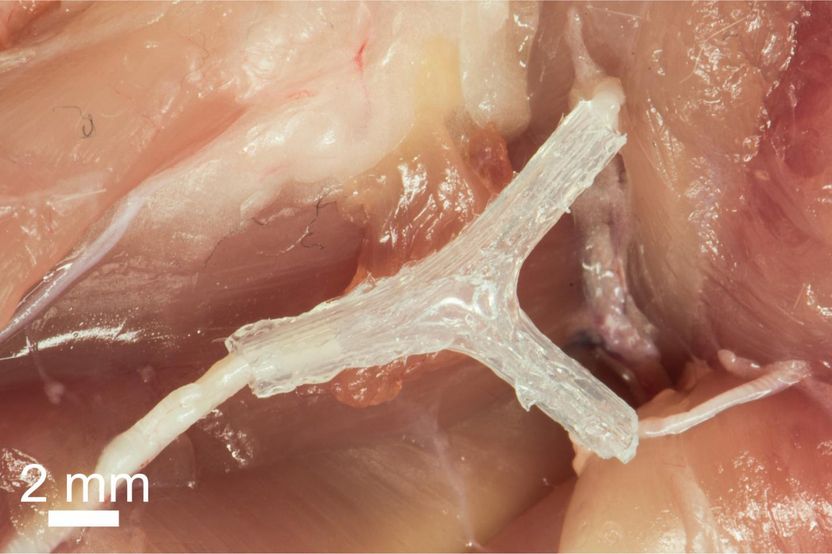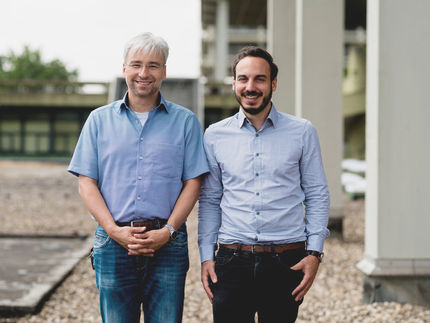3-D printed guide helps regrow complex nerves after injury
Advertisement
A national team of researchers has developed a first-of-its-kind, 3D-printed guide that helps regrow both the sensory and motor functions of complex nerves after injury. The groundbreaking research has the potential to help people who experience nerve injuries or disease.

This is a 3-D printed nerve regeneration pathway implanted in a rat helped to improve walking in 10 to 12 weeks after implantation.
University of Minnesota College of Science and Engineering
Nerve regeneration is a complex process. Because of this complexity, regrowth of nerves after injury or disease is very rare, according to the Mayo Clinic. Nerve damage is often permanent. Advanced 3D printing methods may now be the solution.
In a new study researchers used a combination of 3D imaging and 3D printing techniques to create a custom silicone guide implanted with biochemical cues to help nerve regeneration. The guide's effectiveness was tested in the lab using rats.
To achieve their results, researchers used a 3D scanner to reverse engineer the structure of a rat's sciatic nerve. They then used a specialized, custom-built 3D printer to print a guide for regeneration. Incorporated into the guide were 3D-printed chemical cues to promote both motor and sensory nerve regeneration. The guide was then implanted into the rat by surgically grafting it to the cut ends of the nerve. Within about 10 to 12 weeks, the rat's ability to walk again was improved.
"This represents an important proof of concept of the 3D printing of custom nerve guides for the regeneration of complex nerve injuries," said University of Minnesota mechanical engineering professor Michael McAlpine, the study's lead researcher. "Someday we hope that we could have a 3D scanner and printer right at the hospital to create custom nerve guides right on site to restore nerve function."
Scanning and printing takes about an hour, but the body needs several weeks to regrow the nerves. McAlpine said previous studies have shown regrowth of linear nerves, but this is the first time a study has shown the creation of a custom guide for regrowth of a complex nerve like the Y-shaped sciatic nerve that has both sensory and motor branches.
"The exciting next step would be to implant these guides in humans rather than rats," McAlpine said. In cases where a nerve is unavailable for scanning, McAlpine said there could someday be a "library" of scanned nerves from other people or cadavers that hospitals could use to create closely matched 3D-printed guides for patients.
Original publication
Johnson, Blake N. and Lancaster, Karen Z. and Zhen, Gehua and He, Junyun and Gupta, Maneesh K. and Kong, Yong Lin and Engel, Esteban A. and Krick, Kellin D. and Ju, Alex and Meng, Fanben and Enquist, Lynn W. and Jia, Xiaofeng and McAlpine, Michael C.; "3D Printed Anatomical Nerve Regeneration Pathways"; Advanced Functional Materials; 2015




























































